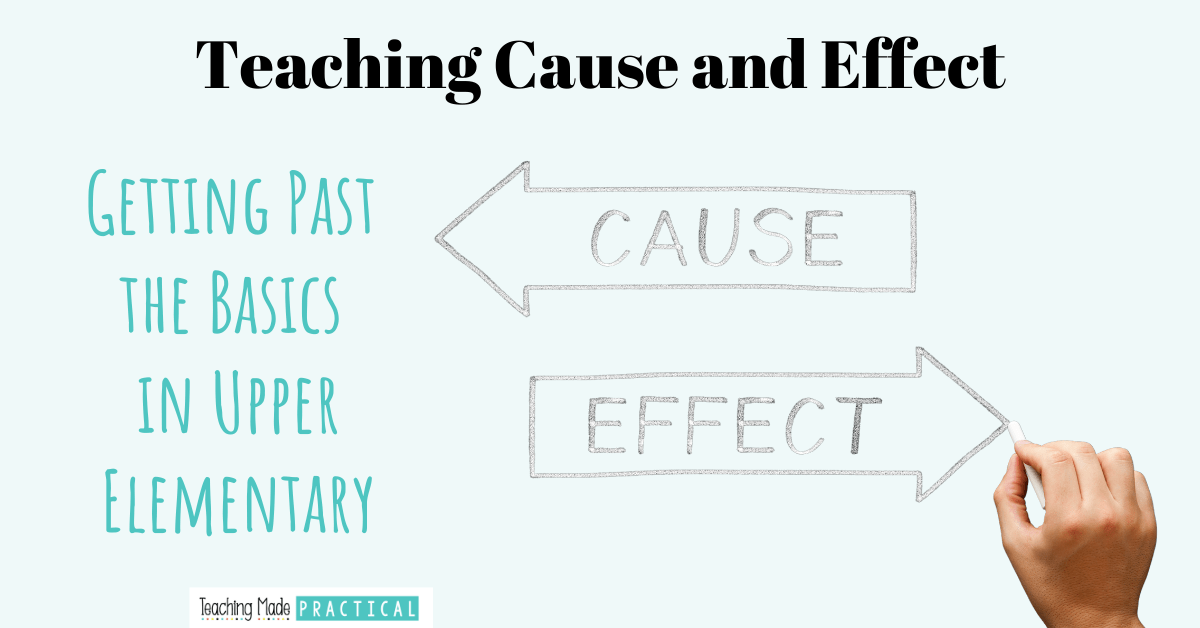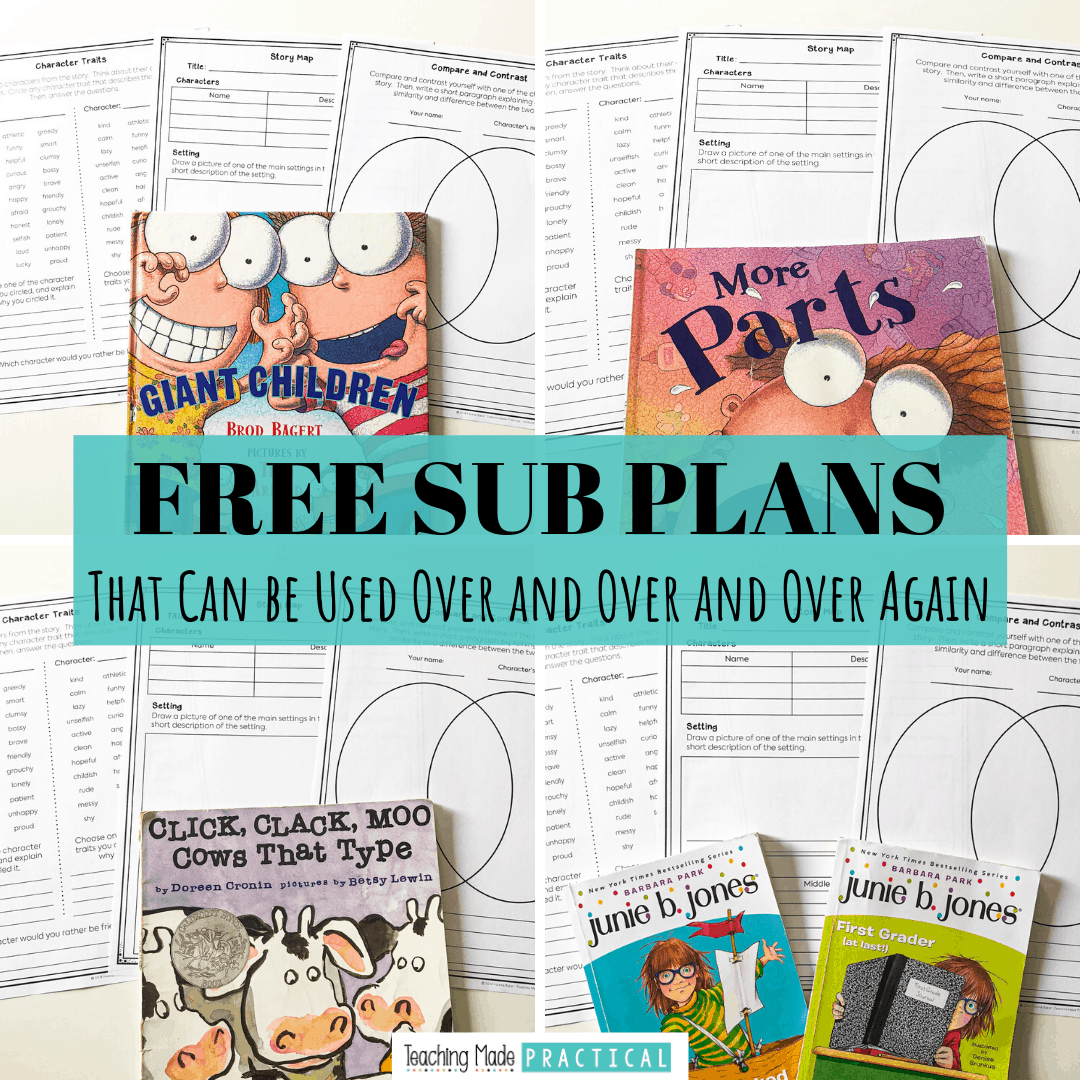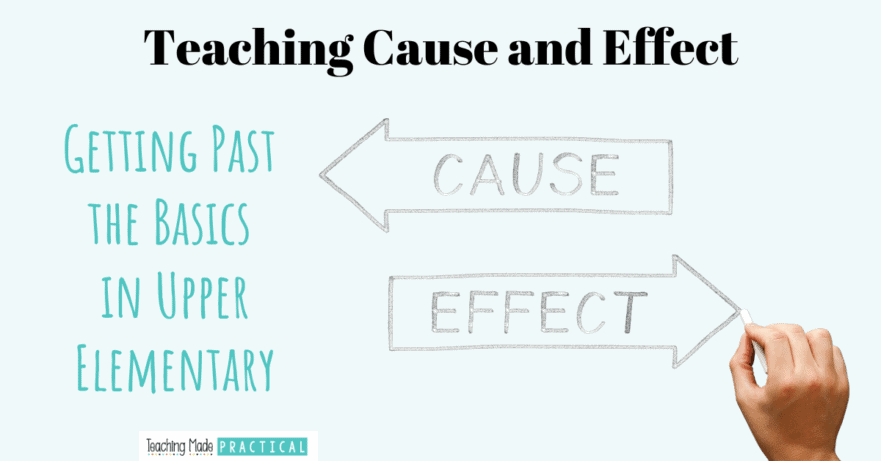
Google “cause and effect lessons” and you’ll find some predictable ideas:
- Read If You Give a Mouse a Cookie or Alexander and the Terrible, Horrible, No Good Very Bad Day
- Create an anchor chart with signal words
- Cause and effect matching game
- Use photos to show cause and effect examples
- Provide memorable examples, like popping a balloon
And while all of these activities make a great introduction to cause and effect, they do not get at the meat of cause and effect, and they aren’t very rigorous.
After students have been introduced to the basics, we need to give them time to experience cause and effect relationships that are more complicated, like they are in the real world.
Looking at Cause and Effect Relationships More Closely
In this world of social media and click baiting, it is essential that students don’t just spend time identifying cause and effect in text, but considering whether the cause and effect relationships presented actually make sense. Sometimes, unreliable news sources try to depict cause and effect relationships where they don’t exist in order to support their own views.
Practice this crucial skill by writing sentences with cause and effect relationships that don’t make sense, and having students change the sentence so that it does make sense. For example:
- Randy couldn’t see so he turned off the lights.
- The heavy rains led to an early Christmas.
- I drove to the post office because my friend wanted to go bowling.
Student will love reading and correcting ridiculous cause and effect relationships like this, and it leads to more critical readers. These different cause and effect anchor charts can help deepen students' understanding as well.
Another way to practice this skill is through writing. Provide students with a cause, and then have them write a short story that includes that cause as well as as a reasonable effect.
Or, you could provide students with an effect, and then have students write a short story that includes both the provided effect as well as a reasonable cause.
Some sample causes and effects could be:
- I didn't eat breakfast.
- The window shattered.
- Xavier's phone ran out of battery.
Both of these activities are much more rigorous than simply having students identify the cause and the effect, and they are both already prepared for you in this Cause and Effect Bundle that includes no prep resources, games, and task cards for you to use!
Multiple Causes and Multiple Effects
Another limitation of activities like the cause and effect matching game is that it reinforces the false idea that a cause has one effect and vis versa. In the real world, this is simply not true, although unreliable news sources might present issues that way.
But the real world is complicated. There is not just one thing that causes poverty. Or one effect of placing unrealistic expectations on teachers. There are multiple causes and multiple effects. Teaching students to think like this as 3rd, 4th, and 5th graders will better prepare them to read more critically as they become adults.
An often used cause and effect example in upper elementary is something along the lines of, “It started to rain, so I pulled out an umbrella.” Rain has MANY more effects than this, however. Some possible examples are:
- A baseball game is canceled
- A backyard begins to flood
- Some plants get the water they need to grow
- Some plants get too much water and die
- A dog gets muddy
- Cars on the highway slow down
- My hair frizzes
- I turn my windshield wipers on
Teaching students that a cause can have multiple effects, and an effect can have multiple causes is easy. Just integrate it into your already prepared lessons – whenever you have students identify a cause or an effect, help them brainstorm other possible causes and effects.
This Cause and Effect Bundle has some activities geared towards getting students to think about multiple causes and multiple effects (including some fun mazes), as well as many other useful and no prep resources.
These Cause and Effect Ideas are Great, But I Don't Have the Time!
If you're looking for cause and effect activities like these, but don't have time to create them yourself, then check out this Cause and Effect Bundle. It has some activities geared towards getting students to think about multiple causes and multiple effects (including some fun mazes), as well as many other useful and no prep resources.
If your students already have a good grasp of cause and effect but just need some practice or review, check out these cause and effect game ideas!
Never Stress Over Sub Plans Again!

Make copies, find a fiction book, and you'll be ready for any emergency that comes your way!







